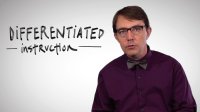Flipped-Learning Toolkit: 5 Steps for Formative Assessment
With the five-step mastery check, flipped learning teachers can quickly determine who understands the work, who’s struggling, and who hasn’t even watched the video.
Editor's Note: This post was co-authored by Aaron Sams, Managing Director of FlippedClass.com and founding member of the Flipped Learning Network.
If you flip your class, you might be able to rid yourself of the bane of many teachers: grading papers late at night. Since the flipped classroom model moves teachers away from the "front of the room," they have more time to interact with students and implement a wide variety of instructional strategies -- including formative assessment.
5 Steps to Check for Mastery
One formative assessment strategy has the side benefit of not taking papers home to grade. This strategy, called a mastery check, has five specific steps:
1. Assignment
Assign students work to complete based on one specific objective. This often takes the form of a paper-and-pencil set of exercises. The exercises are scaffolded such that the first is easy and the last one is more difficult.
2. Choice
Students are told to solve either the even or the odd problems, or perhaps some other combination.
3. Check for Mastery
Once a student has completed his work, he asks the teacher to complete a check for mastery. This is the critical step. The teacher looks over the completed exercises and then asks him to verbally explain one or two of the answers. For example: "Explain to me how you did exercise four." It is during this oral interaction where a number of things are revealed and could be categorized in the following ways:
- They get it. Students' explanations are acceptable. They understand the key concept on this objective.
- They almost get it. They generally understand the concept but have a minor misconception or are making a common mistake. The teacher could then assign the student one more exercise to complete in order to demonstrate mastery.
- They have significant struggles. These students will need more instruction -- perhaps going back to watch the flipped video, or possibly relearning through alternative means if the flipped video was ineffective for this learner. These students are then asked to complete more than one of the extra exercises to demonstrate mastery.
- They cheated. During the check for mastery, if a student has a very well-done paper but can't explain a specific answer, it often reveals that she has not done her own work. Often these students have not bothered to learn from the flipped video. Assign students in this situation to view the required video content and repeat all of the questions on the assignment again.
4. Remediation (If Necessary)
If students were asked to complete additional exercises for the reasons above, provide appropriate remediation and have them complete the work, then have them ask for a second check for mastery.
5. Check for Mastery #2 (If Necessary)
After receiving appropriate remediation and completing additional exercises, students have a second check for mastery and repeat as necessary.
Watch this video clip of Aaron's classroom in action. Note how Aaron is walking around with a clipboard and chatting with students. You can see him having these mastery check conversations:
Flexibility, Efficiency, and Accountability
Remember: this method of checking for understanding is possible only in a flipped class where the teacher has extra time to interact and work individually and in small groups with students. In many ways it is a very free-flowing method. For example, if a group of students are all making the same mistakes or have the same misconception, you can form an ad hoc tutorial group and conduct a mini-lesson with them. Those students who understand and have mastered the content are able to complete the lessons more rapidly. Students enjoy the choice and the flexibility this model gives them.
One benefit of these mastery checks is that students take more time to deeply learn the content instead of rushing through instructional material. This makes their learning process more efficient and encourages them to learn the material carefully the first time.
Perhaps the greatest benefit of the mastery check is that each student has to demonstrate mastery of each objective and, if not, is provided immediate feedback. When a teacher takes home a stack of papers to grade, he or she finds out hours later which students understood the content, which ones generally understood, and which ones are lost. With a mastery check, every student must actually learn the concept, and they all receive immediate and appropriate feedback and intervention. Every student has to master the material, and moving a student on with two out of ten correct is no longer an option.
How could you modify or use this model in your classroom? We would love to hear how the mastery check might work for you.
